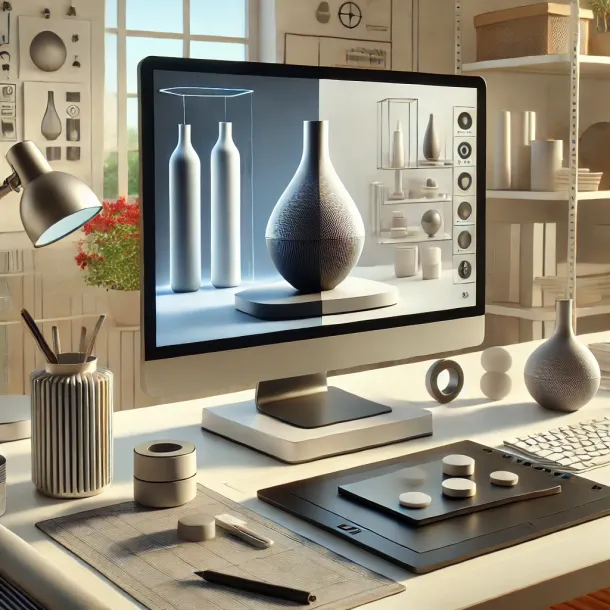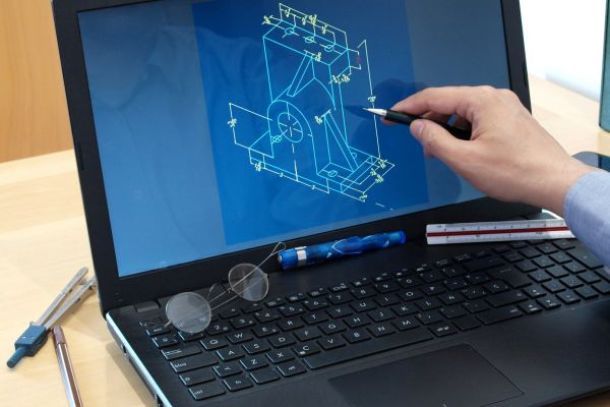Understanding the Psychology of Design: How Colors and Shapes Influence Perception
Understanding the Psychology of Design: How Colors and Shapes Influence Perception
Design is much more than just creating visually appealing graphics. It’s a strategic process that involves understanding human psychology and how different elements like colors and shapes influence perception. When used effectively, these elements can evoke specific emotions, guide decisions, and even shape behavior. In this article, we will explore the psychology of design, focusing on how colors and shapes influence perception, and how designers can leverage this knowledge to create impactful and meaningful designs.
The Power of Color in Design
Color is one of the most powerful tools in a designer’s toolkit. It has the ability to influence moods, evoke emotions, and even drive consumer behavior. The psychology of color is complex, as different colors can have different meanings based on cultural context, personal experiences, and individual preferences. However, certain general associations can be made based on research into how colors affect human psychology.
Warm Colors: Energy and Passion
Warm colors, such as red, orange, and yellow, are known for their ability to evoke strong emotions. These colors are associated with energy, excitement, and passion.
- Red: Red is often associated with strong emotions like love, passion, and anger. It is a color that can increase heart rate and create a sense of urgency, which is why it is often used in clearance sales and to encourage impulse buying.
- Orange: Orange combines the energy of red with the happiness of yellow. It is often associated with creativity, enthusiasm, and vitality. Brands that want to convey a sense of fun and friendliness often use orange in their designs.
- Yellow: Yellow is the color of sunshine and is associated with happiness, optimism, and warmth. It is an attention-grabbing color that can create a sense of positivity. However, too much yellow can lead to feelings of anxiety, so it should be used carefully.
Cool Colors: Calm and Trust
Cool colors, including blue, green, and purple, tend to have a calming and relaxing effect. They are often associated with stability, trust, and professionalism.
- Blue: Blue is one of the most popular colors in design because it is associated with trust, peace, and loyalty. It is a calming color that is often used in corporate designs to create a sense of security and reliability.
- Green: Green is the color of nature and is associated with growth, health, and tranquility. It is often used in designs related to the environment, wellness, and finance. Green can create a sense of balance and harmony.
- Purple: Purple combines the stability of blue and the energy of red, making it a color associated with luxury, creativity, and spirituality. It is often used in designs that want to convey a sense of elegance and sophistication.
Neutral Colors: Balance and Professionalism
Neutral colors, such as black, white, gray, and brown, play a critical role in design. They are often used as background colors or to balance out more vibrant colors.
- Black: Black is a powerful color associated with elegance, sophistication, and authority. It is often used in luxury branding and to create contrast in designs.
- White: White symbolizes purity, simplicity, and cleanliness. It is often used in minimalist designs to create a sense of space and openness.
- Gray: Gray is a neutral, balanced color that can convey a sense of professionalism and timelessness. It is often used in corporate designs to create a conservative and formal look.
- Brown: Brown is associated with reliability, warmth, and earthiness. It is often used in designs that aim to convey a sense of stability and support.
Understanding the psychological impact of colors allows designers to create more effective designs by choosing colors that align with the message they want to convey and the emotions they want to evoke.
The Influence of Shapes in Design
Just as colors have a psychological impact, shapes also play a significant role in influencing perception. Different shapes can evoke different feelings and associations, making them powerful tools in design.
Geometric Shapes: Structure and Stability
Geometric shapes, such as squares, triangles, and circles, are associated with order, stability, and predictability. These shapes are often used in designs that aim to convey a sense of professionalism and reliability.
- Squares and Rectangles: These shapes are associated with strength, reliability, and professionalism. They are commonly used in logos, layouts, and other designs where stability and trust are important. Squares and rectangles create a sense of order and can help organize content in a clear and structured way.
- Circles: Circles are associated with unity, wholeness, and infinity. They are often used in designs to convey a sense of harmony and balance. Because circles have no beginning or end, they can also represent community, relationships, and continuity.
- Triangles: Triangles are dynamic shapes associated with direction, movement, and power. Depending on their orientation, triangles can convey different meanings. For example, an upward-pointing triangle can symbolize stability and growth, while a downward-pointing triangle can convey risk or uncertainty.
Organic Shapes: Natural and Free-Form
Organic shapes are irregular and often resemble shapes found in nature. These shapes are associated with creativity, spontaneity, and fluidity.
- Curves: Curved shapes are soft, flowing, and organic. They are associated with comfort, safety, and relaxation. Curves can also create a sense of movement and dynamism in a design.
- Spirals: Spirals are associated with growth, transformation, and evolution. They can create a sense of progression or journey, making them effective in designs that aim to convey a sense of development or change.
- Free-Form Shapes: Free-form shapes do not follow any specific rules or patterns. They are often used in designs that want to convey creativity, individuality, and freedom. These shapes can add a playful or artistic element to a design.
Abstract Shapes: Modern and Innovative
Abstract shapes are simplified or stylized versions of real-world objects. They are often used in modern and contemporary designs to convey a sense of innovation and creativity.
- Icons and Symbols: Icons are abstract shapes that represent specific objects or concepts. They are used in design to communicate ideas quickly and effectively. For example, a lightbulb icon can represent an idea or innovation, while a heart icon can represent love or compassion.
- Stylized Shapes: Stylized shapes take familiar forms and give them a unique twist. They can be used to create a distinctive visual identity and convey a sense of modernity or creativity.
Combining Colors and Shapes for Maximum Impact
The true power of design lies in the combination of colors and shapes. When used together, these elements can create designs that are not only visually appealing but also deeply impactful. Here are some tips on how to combine colors and shapes effectively:
Create Visual Hierarchy
Visual hierarchy is the arrangement of elements in a way that guides the viewer’s eye through the design. By using contrasting colors and shapes, designers can create a clear visual hierarchy that directs attention to the most important elements.
For example, a bold color combined with a strong geometric shape can draw attention to a headline or call-to-action button. Meanwhile, softer colors and organic shapes can be used in the background to create a sense of depth and context.
Convey Brand Personality
The choice of colors and shapes can help convey a brand’s personality. For example, a brand that wants to be seen as innovative and forward-thinking might use bright, vibrant colors combined with abstract shapes. In contrast, a brand that wants to convey tradition and reliability might use more muted colors and geometric shapes.
When designing for a brand, it’s important to consider the emotions and associations that different colors and shapes can evoke. The goal is to create a design that not only looks good but also aligns with the brand’s values and messaging.
Enhance User Experience
Colors and shapes can also play a significant role in enhancing user experience (UX). By using colors and shapes strategically, designers can create intuitive and user-friendly interfaces.
For example, using color to differentiate between different sections of a website can help users navigate the site more easily. Similarly, using familiar shapes for buttons and icons can make the interface more intuitive.
Case Studies: Successful Use of Colors and Shapes in Design
To better understand the impact of colors and shapes in design, let’s look at some case studies of brands that have successfully leveraged these elements.
Case Study 1: Apple
Apple is known for its minimalist design aesthetic, which is characterized by the use of clean lines, geometric shapes, and a limited color palette. The use of white space and simple shapes helps create a sense of elegance and sophistication, aligning with the brand’s image of innovation and quality.
The use of rounded corners in Apple’s product design, combined with the consistent use of the color white, creates a cohesive and recognizable visual identity. This design approach not only enhances the user experience but also reinforces Apple’s brand values.
Case Study 2: Coca-Cola
Coca-Cola is one of the most recognizable brands in the world, and its use of color and shape plays a significant role in its brand identity. The iconic red and white color scheme is instantly recognizable and evokes feelings of happiness and nostalgia.
The use of the dynamic wave shape in Coca-Cola’s logo and packaging further reinforces the brand’s identity. The wave shape is associated with energy and movement, reflecting the brand’s vibrant and refreshing image.
The Future of Design Psychology
As design continues to evolve, the role of psychology in design will become increasingly important. With advancements in technology, designers will have more tools at their disposal to create personalized and impactful designs that resonate with users on a deeper level.
In the future, we can expect to see more research into how different colors and shapes affect human behavior, as well as the development of new design techniques that leverage this knowledge. Designers will need to stay informed about the latest trends and findings in design psychology to create effective and meaningful designs.
Conclusion
Understanding the psychology of design is essential for creating impactful and meaningful designs. By leveraging the power of colors and shapes, designers can influence perception, evoke emotions, and drive behavior. Whether you are designing a brand identity, a website, or a product, the strategic use of colors and shapes can make all the difference.
As you continue to develop your design skills, remember to consider the psychological impact of your choices. By doing so, you can create designs that not only look good but also connect with your audience on a deeper level.

